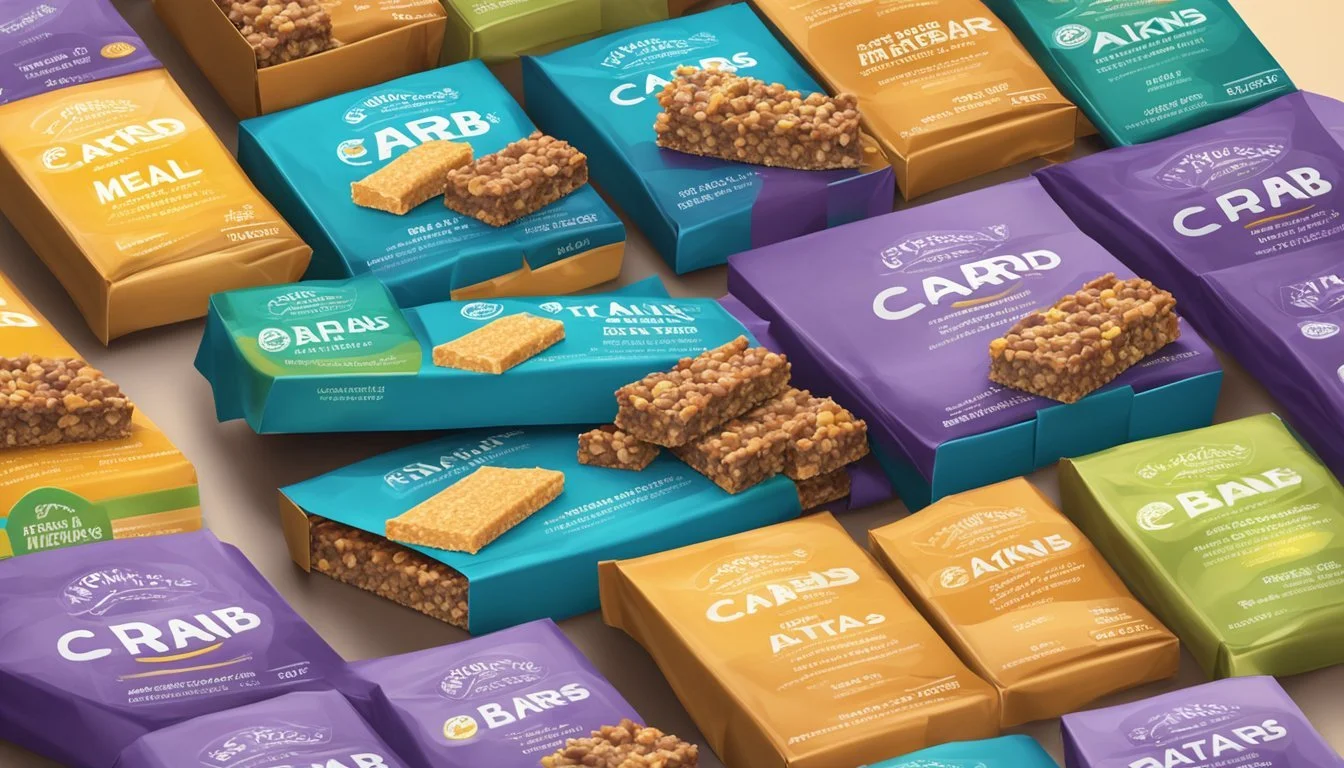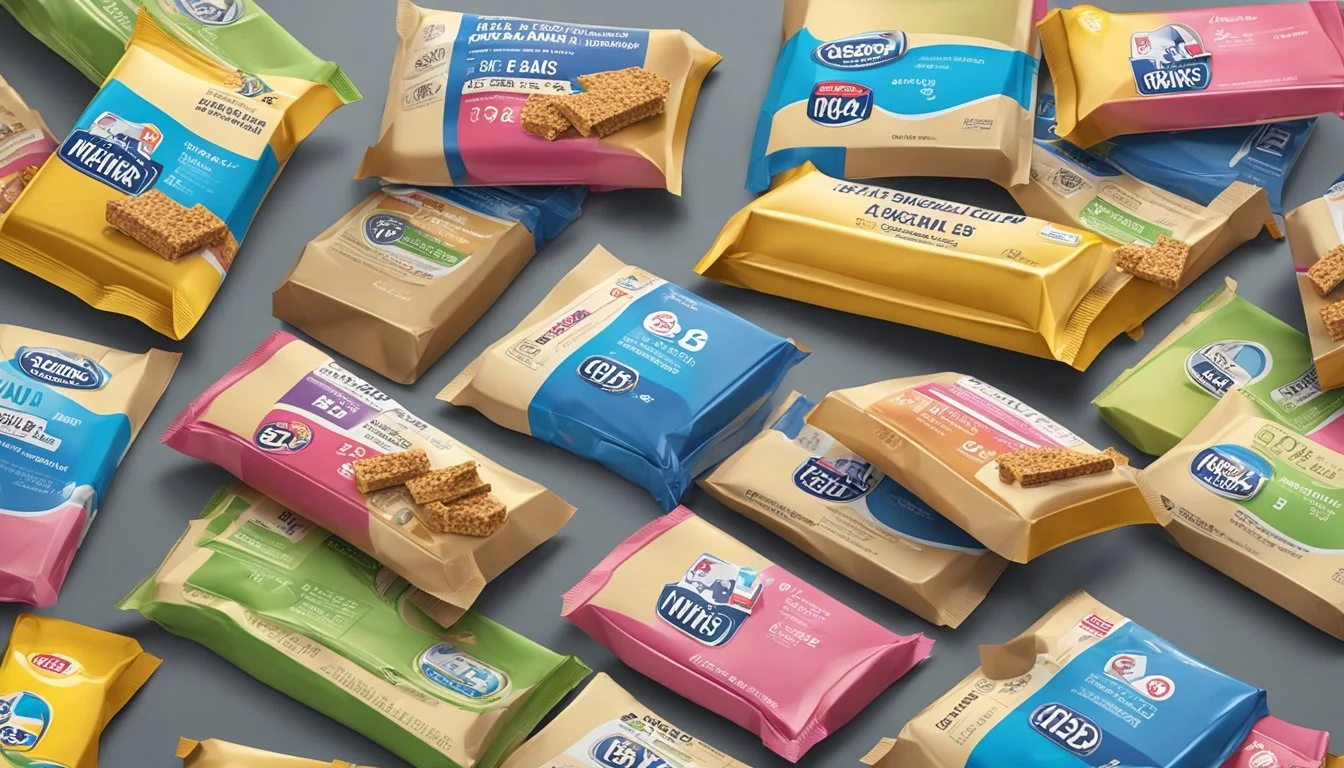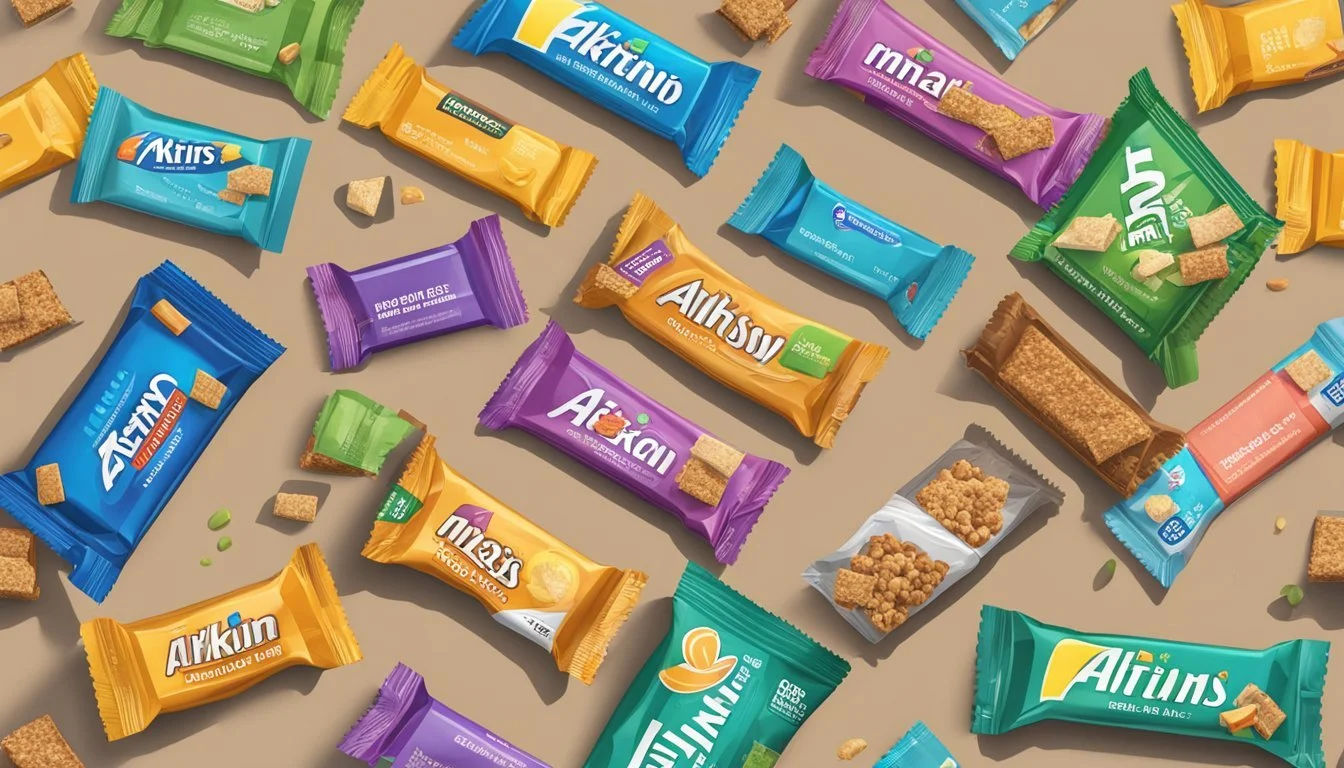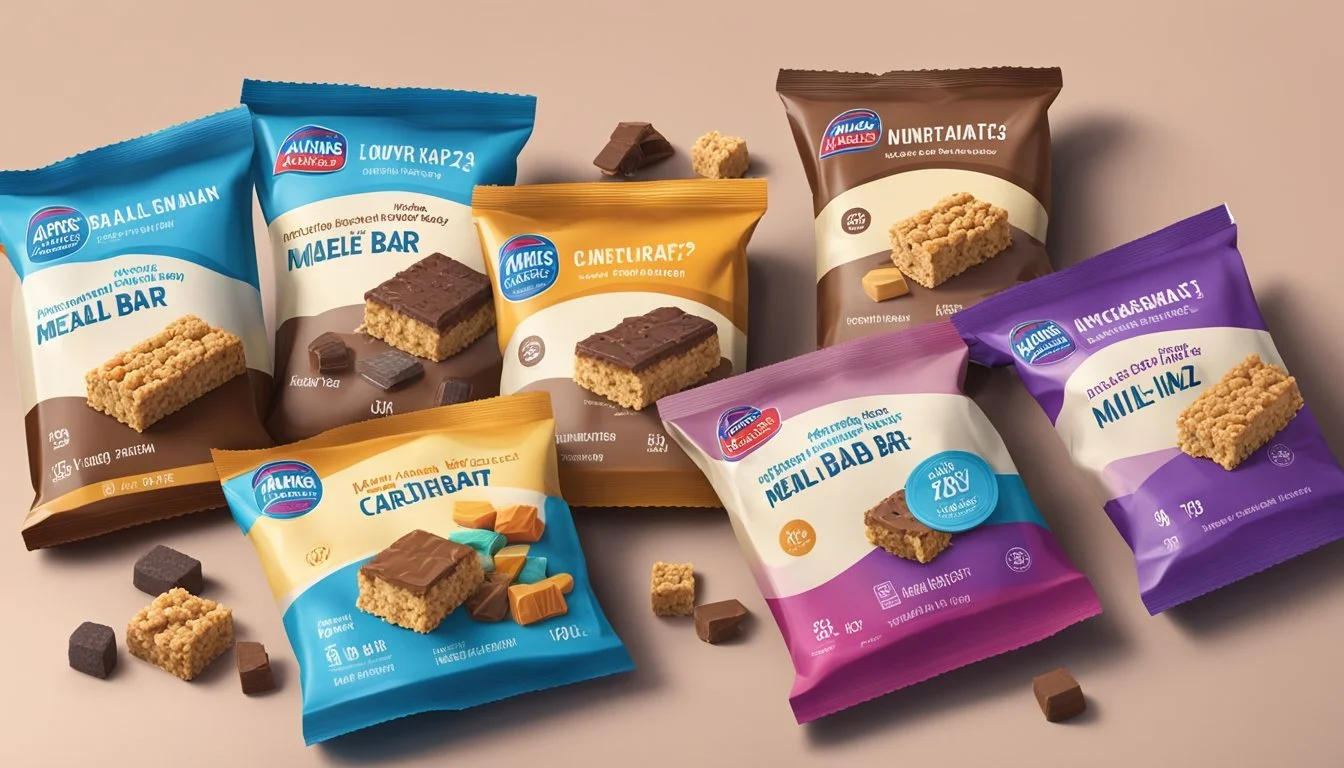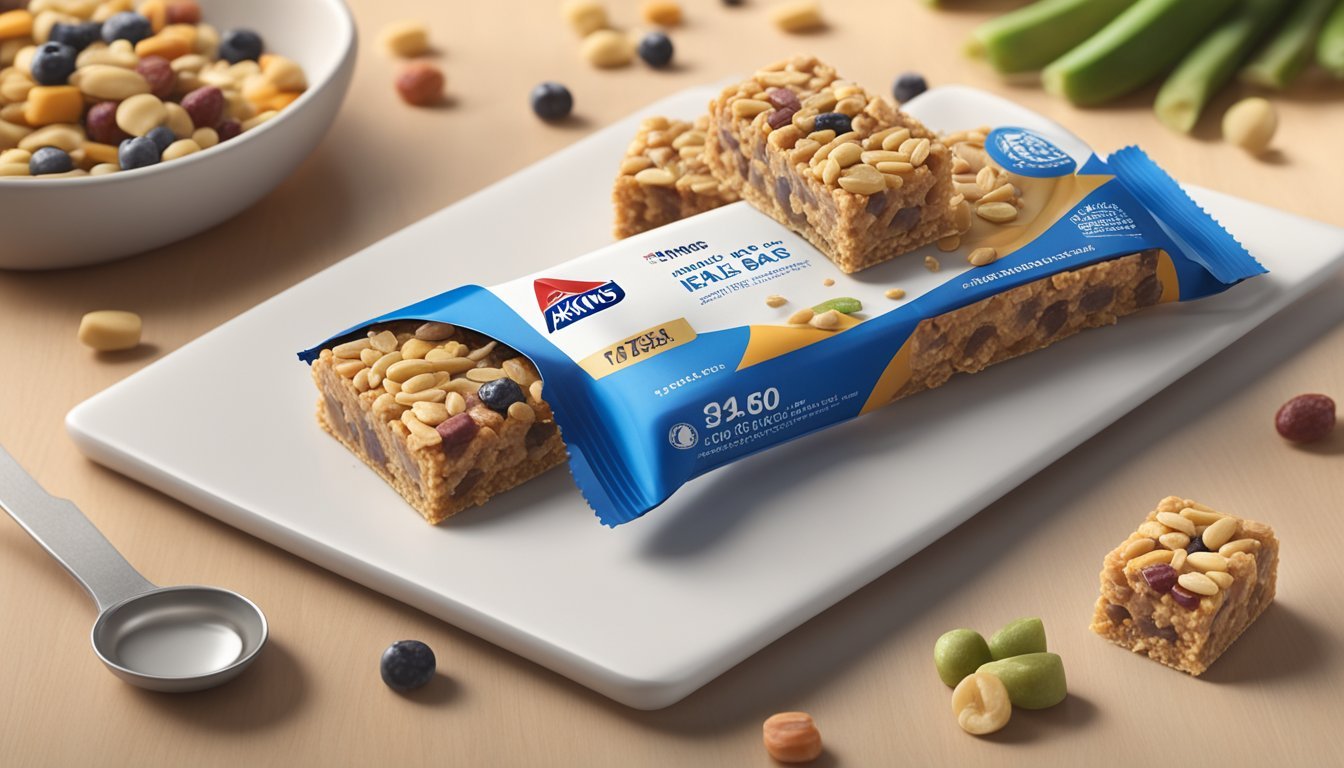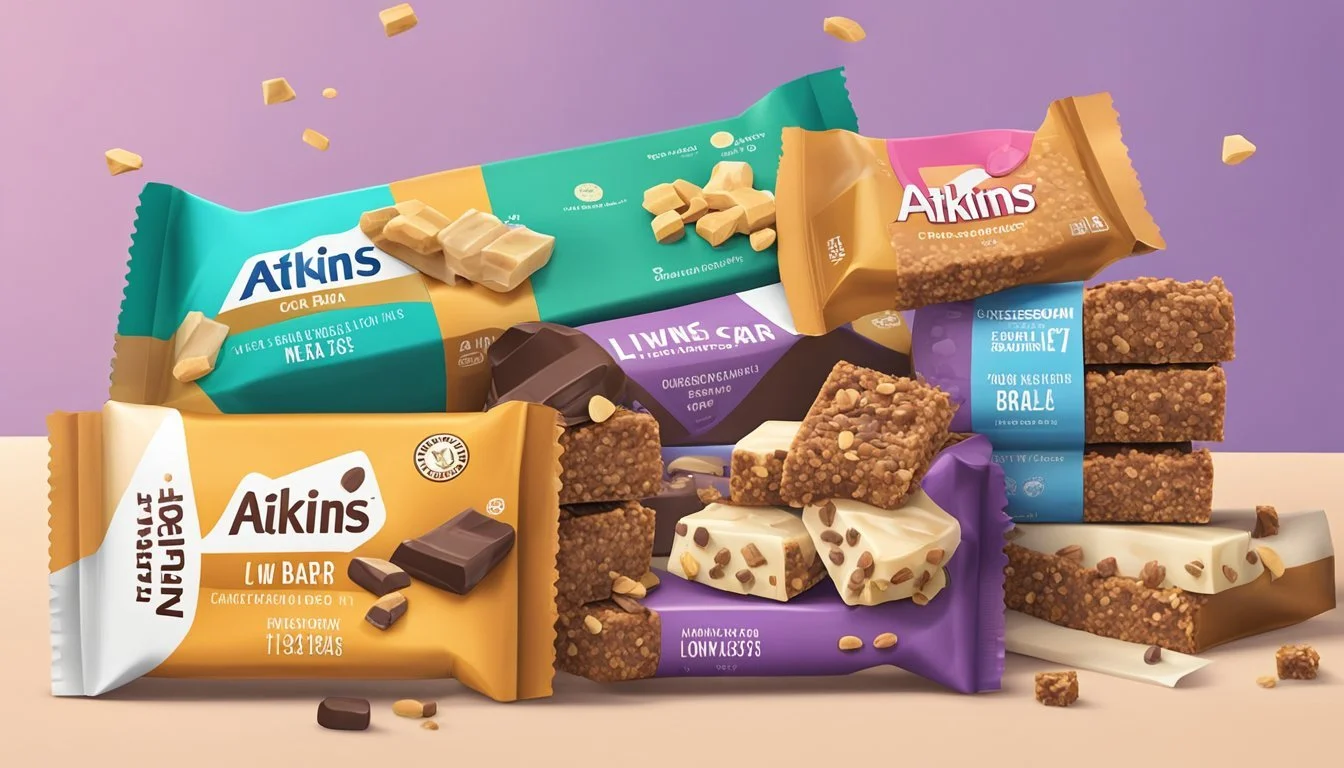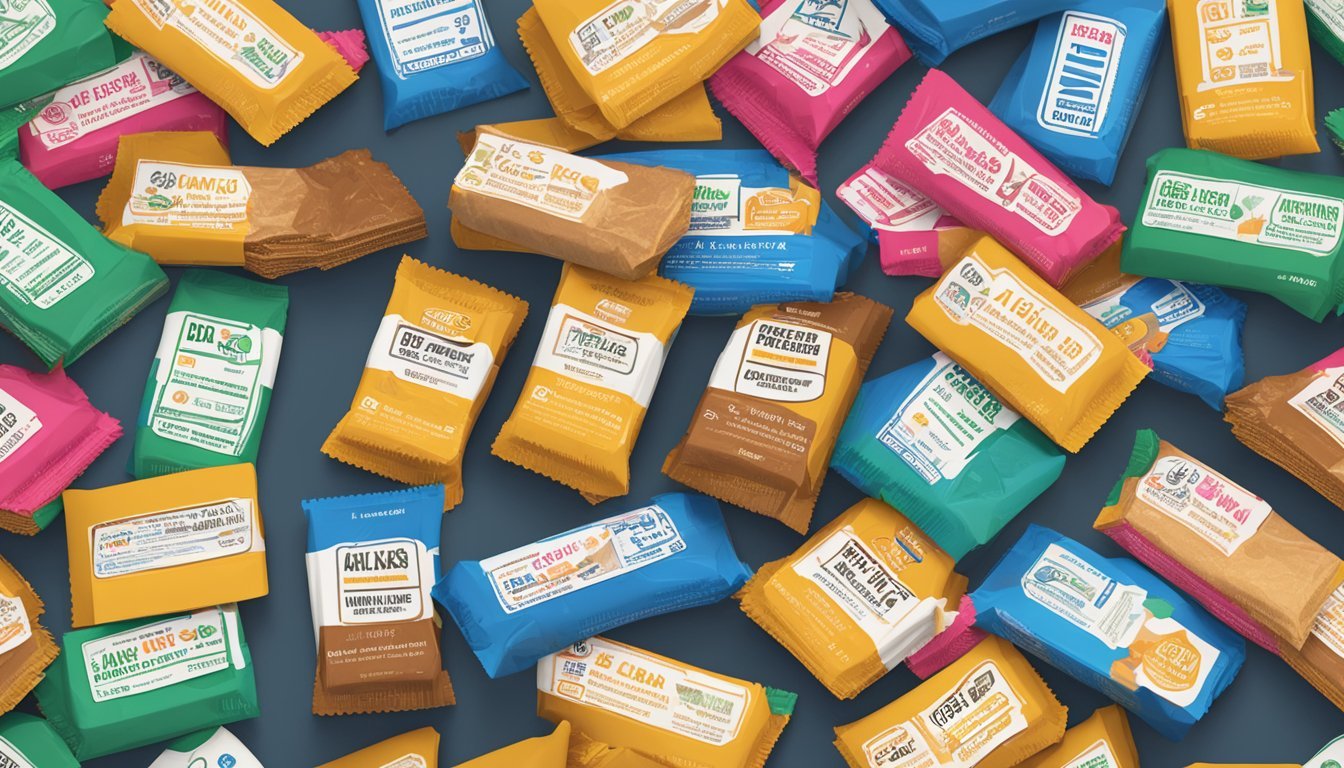How Many Atkins Low-Carb Meal Bars Per Day Is Too Much?
Understanding Limits and Nutrition
Adopting a low-carb lifestyle often includes incorporating meal replacement options such as Atkins low-carb bars to facilitate weight management or dietary control. Atkins bars are specifically designed to align with the Atkins diet— a regimen that restricts carbohydrates in favor of protein and fats. These bars provide a convenient food choice, offering a balance of protein, fats, and a low net carb content, which the Atkins diet posits is key to achieving and maintaining metabolic ketosis for weight loss.
Determining the appropriate number of Atkins meal bars to consume per day hinges on various factors including an individual's specific metabolic needs, the total daily carb allowance, and the phase of the Atkins diet they are currently following. Each Atkins meal bar typically contains between 2 to 4 net carbs, which can accumulate quickly depending on an individual’s daily carb limit. It is important to balance the consumption of these bars with other nutrient-dense whole foods to maintain overall dietary health.
The significance of whole, minimally processed foods in any diet cannot be overstated, and while meal replacement bars can serve as a convenient supplement, they are not intended to be the sole source of nutrition. Striking a balance between the ease of meal bars and the nutritional benefits of a varied diet is essential. For those on the Atkins diet, paying close attention to the body's response, as well as following the provided carb guidelines, is fundamental to avoid consuming an excess of Atkins low-carb meal bars.
Understanding Atkins Diet
The Atkins Diet is a structured low-carb diet aimed at effective weight loss and maintenance, utilizing a controlled carbohydrate intake to transition the body into a state of ketosis.
Principles of Atkins Diet
The fundamental principle of the Atkins Diet is its restriction of carbohydrates to alter the body's metabolism. By significantly lowering carb consumption, the diet encourages the body to enter ketosis, a metabolic state where fat is burned for energy instead of glucose. The diet emphasizes consuming ample amounts of protein and fat, while limiting carbohydrates, particularly in the early phases. Additionally, it underlines the importance of calculating net carbs (total carbs minus fiber) to maintain the body's new metabolic pathway.
Phases of Atkins Diet
The Atkins Diet is divided into four distinct phases, each with its own carb intake guidelines:
Phase 1: Induction
The strictest phase, lasting two weeks with a carb limit of under 20 grams of net carbs per day.
Food choices are primarily protein-rich, like meat and cheese, along with low-carb vegetables.
Phase 2: Balancing
Gradual reintroduction of nutrients, increasing net carb intake by 5 grams per week.
Focus remains on protein, fats, and fiber, slowly adding back nutrient-dense carbs.
Phase 3: Pre-Maintenance
Further increases in carb intake to determine the maximum level that allows for steady weight loss.
A broader selection of carbohydrates is allowed, monitoring individual response.
Phase 4: Maintenance
Known as the lifetime maintenance phase, it involves adhering to the new eating habits developed from the prior phases.
Carb levels are adjusted to maintain weight and health, highlighting the individualization of the Atkins Diet.
Nutritional Profile of Atkins Meal Bars
Atkins Meal Bars are formulated to be low in carbohydrates and high in protein and fiber, targeting individuals following a low-carb diet.
Ingredients and Macronutrients
Atkins bars typically include a combination of protein, fiber, and healthy fats. They are crafted to provide a balanced nutritional profile that aligns with ketogenic and low-carb dietary patterns. Here's what the macronutrient breakdown often looks like:
Protein: The bars consist of varying protein amounts, usually around 10 to 15 grams per bar. Sources can include soy, milk, and whey proteins.
Fiber: Consumers can expect a fiber content typically in the range of 5 to 10 grams, derived from sources such as oat fiber and inulin.
Fat: Fat content in these bars usually falls between 5 to 10 grams, with some of the fats coming from nuts and seeds, known for their healthy fats.
Net Carbs: Defined as total carbs minus fiber and sugar alcohols, net carbs in Atkins bars range from 2 to 4 grams per serving.
Calories: Calories per bar are generally between 150 to 250.
Sugar Alcohols and Artificial Sweeteners: To maintain sweetness while keeping the net carb count low, Atkins bars often employ sugar alcohols like maltitol and glycerin, along with artificial sweeteners.
Comparison to Whole Foods
When compared to whole foods, the nutritional content of Atkins bars is distinct. Foods such as nuts, seeds, cheese, and eggs offer protein, fats, and other nutrients without the addition of sugar alcohols or artificial sweeteners.
Whole Foods Protein: Sources like eggs and cheese provide protein along with essential vitamins and minerals.
Whole Foods Fiber: Unlike the fiber in meal bars, fiber from whole foods comes with additional nutrients and antioxidants, as seen in nuts and seeds.
Whole Foods Fats: Whole foods typically do not contain added fats and have naturally occurring healthy fats, unlike the processed fats that may be included in meal bars.
Carbohydrates: Carbs from whole foods come with a range of nutrients and are not impacted by sugar alcohols or artificial sweeteners, making them potentially more beneficial for overall health.
Analyzing Atkins Meal Bars Consumption
When incorporating Atkins low-carb meal bars into a diet, it's important to consider both the recommended quantity and the potential side effects of overconsumption. These bars are designed as a convenient snack or meal replacement option for those seeking to manage their carb intake and support weight loss.
Moderation and Recommended Quantities
Atkins meal bars are formulated to be keto-friendly, providing a low amount of net carbs that cater to individuals following a low-carb diet. They are positioned as a snack or a meal replacement, making them flexible additions to one's dietary regime. Protein and healthy fats are balanced in these snacks, aiming to keep blood sugar levels stable and appetite in check, which can be beneficial for weight loss when used correctly.
Snacking: One bar between meals can help curb hunger without significantly increasing daily carb intake.
Meal Replacement: Depending on individual dietary goals, one bar may replace a meal, ideally breakfast or lunch.
Recommended Daily Intake:
For Phase 2 of the Atkins diet, it's suggested to add no more than 5 grams of net carbs per week, which may include an Atkins bar.
Potential Side Effects of Overconsumption
While Atkins bars offer a low-carb, convenient option, overindulging can lead to unintended outcomes. Each bar, although low in net carbs, still contributes to the daily carb allowance and overconsumption could hinder weight loss efforts and potentially lead to weight gain.
Weight Gain: Excessive calorie intake from snacks can contribute to weight gain.
Blood Sugar Levels: Even low-carb snacks can affect blood sugar, particularly for those with diabetes.
Heart Disease and Cholesterol: Highly processed foods often contain ingredients that may impact cholesterol levels and heart health.
Consumers should be mindful of their overall diet and health conditions when integrating Atkins meal bars into their daily routine. It's important to balance the convenience of these bars with whole, unprocessed foods to maintain a nutritious and balanced diet.
Atkins Low-Carb Diet and Weight Management
The Atkins low-carb diet is structured to aid in weight loss and maintain a healthy weight by controlling carb intake and emphasizing protein and fat consumption.
Achieving Weight Loss Goals
The Atkins diet operates on the principle of reducing carbohydrate intake, which in turn is meant to help the body burn fat for energy more effectively. During the initial phase of the Atkins plan, known as the Induction phase, individuals are instructed to consume under 20 grams of carbs per day for 2 weeks. The intention is to jumpstart weight loss by switching the body's metabolism from burning carbs to burning fat. As one progresses through the subsequent phases, the allowable carb intake gradually increases until a personal balance that allows for weight maintenance is found.
Maintaining Healthy Weight
Once weight loss goals are achieved, the Atkins diet prescribes a lifelong low-carbohydrate approach to help maintain a healthy weight. The plan highlights the importance of monitoring daily carb consumption to remain within a range that prevents weight regain but still allows for dietary flexibility. For long-term maintenance, an individual may consume around 80-100 Net Carbs per day. The balance of macronutrients—fats, proteins, and carbohydrates—along with total calories consumed, plays a critical role in maintaining a healthy weight and preventing obesity. The Atkins diet is sometimes compared to the keto diet, though they have different guidelines for nutritional content and carb limits.
Dietary Considerations for Specific Health Conditions
When considering how many Atkins low-carb meal bars to consume daily, individuals must consider their unique health conditions. This is especially pertinent for those managing blood sugar levels and heart health.
Impact on Blood Sugar and Diabetes
Blood Sugar Control: For individuals with diabetes, especially Type 2 diabetes, monitoring carbohydrate intake is crucial for maintaining stable blood sugar levels. Atkins low-carb meal bars are designed to be lower in carbohydrates, which can help in preventing spikes in blood sugar. However, it's important for those with diabetes to consult with healthcare professionals to tailor their nutritional intake, as the bars may still contain sugars and other carbohydrates that impact blood sugar.
Carbohydrates per Atkins Bar: Typically around 2-4g net carbs
Recommended Daily Carb Intake for Adults with Diabetes: 45-60g per meal (according to the American Diabetes Association)
Nutrition Balance: Aside from carbs, Atkins bars also offer protein and fats, which have a minimal immediate impact on blood sugar. Balancing the consumption of these bars with other high-fiber, nutrient-dense foods is essential to maintain nutritional adequacy and prevent hyperglycemia.
Heart Health and Diet Relation
Cholesterol Management: The Atkins diet promotes high intake of protein and fats, which might raise concerns regarding cholesterol levels. Individuals with or at risk for heart disease should be vigilant about the types of fats consumed. While the Atkins bars may be low in carbs, it is the quality and type of fats that matter, as some can elevate bad cholesterol levels.
Saturated Fat: Often found in animal products and should be limited
Unsaturated Fat: Found in plants and fish, and can be beneficial for heart health
Heart Disease Risk: Considering the rise in processed food consumption, individuals with heart health concerns should evaluate the ingredient list of products like Atkins meal bars. Whole foods, rich in omega-3 fatty acids, fiber, and antioxidants are key components in a heart-healthy diet. The Atkins low-carb meal bars could be incorporated in moderation, under the guidance of dietary professionals.
Atkins Meal Bars and Lifestyle Adaptation
Atkins meal bars are designed to integrate with the different phases of the Atkins diet, offering a convenient snack or meal replacement option that aligns with the low-carb approach.
Incorporating Bars into the Atkins Diet Phases
The Atkins diet is structured in phases, starting with the Induction Phase (Phase 1), which restricts carbohydrates to 20-25 grams per day to kickstart weight loss. As such, Atkins bars, which typically contain 2-4 net carbs per bar, can be included but must be monitored to stay within the daily carb limit. In the subsequent phases, the carb allowance increases slightly, making it easier to incorporate these bars more regularly.
Phase 1 (Induction Phase): Use bars sparingly due to stricter carb limits
Phase 2 and beyond: Gradually increase bar frequency with rising carb allowances
Using Meal Bars as Snacks or Meal Replacements
Atkins meal bars can serve dual roles in a low-carb diet. When used as a snack, they provide a controlled portion of carbs, proteins, and fats. For meal replacements, they offer a convenient alternative without compromising the diet's nutritional goals.
Snacks:
Supplement between meals to maintain energy levels
Maintain portion control
Meal Replacements:
Replace one meal to simplify meal planning
Ensure balanced nutrient intake within the carb limit
By incorporating Atkins meal bars appropriately, individuals on low-carb diets, including the ketogenic diet, can maintain their lifestyle with optimal convenience and minimal disruption.
Hydration and Beverage Choices
When following the Atkins Diet, an individual's choice of beverages is crucial in maintaining proper hydration and supporting the diet's low-carb structure.
Importance of Water Intake
Water is the cornerstone of hydration and should be the primary drink of choice for those on the Atkins Diet. Adequate water intake supports metabolic functions and is essential for helping the body achieve and sustain ketosis, where the body burns fat for energy in the absence of carbohydrates.
Daily Water Goal: Aim for at least 8 cups (64 ounces) of water per day.
Benefits:
Helps reduce hunger
Supports metabolic processes
Essential for kidney function and waste removal
Suitable Drinks on Atkins Diet
While water is paramount, other beverages can be included in the Atkins Diet. Choices should align with the diet's low-carb principles to avoid disrupting ketosis.
Tea and Coffee: Unsweetened tea and coffee are allowable. Both should be consumed in moderation and without added sugar. Artificial sweeteners or a small amount of cream are options.
Beverage Consideration Coffee Limit additions of cream or milk Tea Herbal teas are preferred choices
Alcohol: Minimal and careful consumption is necessary since it can slow down weight loss and potential interfere with ketosis.
Alcohol Type Atkins Guidelines Spirits Limited amounts, avoid mixers with sugar
Broth: A savory option for variety. Bone broth or clear broth can be comforting and is carb-free.
Other Beverages:
Sugar Alcohols: Used in some diet drinks must be counted towards daily carbohydrate intake.
Lemon Juice: Can add flavor to water, but should be used sparingly to maintain low carb intake.
Selecting the appropriate beverages can ensure that individuals remain hydrated and stay within the guidelines of the Atkins Diet.
Managing Cravings and Snacking
When on a low-carb diet like the Atkins program, it's important for one to manage their snacks wisely to both satisfy cravings and support their dietary goals. Snack choices can play a pivotal role in maintaining energy levels and providing essential nutrients without overindulging in carbs.
Healthy Alternatives to High-Carb Snacks
For individuals seeking to curb their cravings without consuming too many carbohydrates, healthy alternatives are key. One can opt for selections that are both low in carbs and high in nutritional value. Here is a list of snack options that align with such criteria:
Nuts and Seeds: A handful of almonds, walnuts, or pumpkin seeds can satisfy with their crunchy texture and are packed with healthy fats and protein.
Vegetarian Choices: Crisp cucumber slices, bell pepper sticks, or celery can serve as vehicles for low-carb spreads like hummus or guacamole.
Leafy Greens: A small salad made with leafy greens such as spinach or kale can provide fiber and essential vitamins with minimal carbs.
Dairy: Cheese cubes or greek yogurt can be an additional source of protein and calcium, whilst still keeping carb count low.
Controlling Appetite with Atkins Bars
Atkins Bars are specifically formulated to align with the Atkins diet phases, offering a convenient solution for managing appetite and providing a snack that fits within the low-carb framework.
Protein and Fiber Content: They are engineered to have a balance of protein and fiber which aids in appetite control and prolongs satiety.
Net Carbs: An Atkins bar typically contains around 2 to 4 net grams of carbs, fitting into the diet's daily carb allowance.
It's essential for individuals to consider the net carb content and avoid consuming Atkins bars excessively. While they can help control one's appetite between meals, relying solely on snack bars can limit the intake of whole, unprocessed foods that are equally crucial for a balanced diet.
Nutrient Supplementation and Deficiency Prevention
When consuming Atkins low-carb meal bars as a part of one's diet, it is crucial to understand the balance between nutrient supplementation and preventing nutritional deficiencies.
Identifying Essential Nutrients in Atkins Bars
Atkins bars are designed to be low in carbohydrates while providing essential nutrients such as protein and fiber. They may also include vitamins and minerals that are fundamental to a well-rounded diet. The typical nutritional profile of an Atkins bar includes:
Protein: A main macronutrient important for muscle repair and growth.
Fiber: Helps with digestive health and can aid in the feeling of fullness.
Fat: Provides energy and supports cell growth.
Vitamins and Minerals: Small amounts may be included; however, not in the same variety or quantity as found in whole foods.
It's critical to review the label to assess whether these bars meet daily nutritional requirements or if additional supplementation might be necessary.
Dealing with Electrolyte Imbalance
Atkins bars, being a carb snack alternative, when consumed excessively, can lead to an electrolyte imbalance, especially if they replace meals that would provide a more diverse range of electrolytes. Electrolytes are minerals in the body that include sodium, potassium, magnesium, and calcium. Symptoms of an imbalance may include cramps, fatigue, and irregular heartbeat. To prevent this:
Ensure adequate hydration to maintain electrolyte balance.
Consume a varied diet including fruits, vegetables, and lean proteins to receive a broad spectrum of minerals and to offset any potential deficiencies caused by relying heavily on meal replacement bars.
Cautions and Considerations
When incorporating Atkins low-carb meal bars into one's diet, it's essential to be mindful of the additive content and understand how to count and adjust carbohydrate intake to maintain a balanced approach.
Monitoring Additives and Artificial Ingredients
Many Atkins bars, although low in net carbs, are considered highly processed foods. They often contain artificial sweeteners and other additives to enhance flavor and texture. Common sweeteners found in these bars include sucralose and sugar alcohols such as maltitol that can have gastrointestinal side effects when consumed in excessive amounts. Consumers should scrutinize the ingredient list for these additives and consider the potential effects of including processed foods in a diet that traditionally emphasizes whole, unprocessed options.
Understanding Carbohydrate Counting and Adjustments
The Atkins diet employs a method called the Atkins Carb Counter, which helps one to monitor daily intake of net carbs — the total carbohydrates minus fiber and certain sugar substitutes. For instance, while the lowest-carb Atkins bars may have 2 net grams of carbs, this can impact the small carb allowance during the initial phases of the diet plan, when the recommended carb intake is usually under 20 grams per day. As one progresses through different phases of Atkins, the weekly carb allowance increases by 5 grams of net carbs, so meal frequency and bar selection must be adjusted accordingly to adhere to this structured increment and avoid undermining the diet's efficacy.
Careful consideration should be given to both the quality and quantity of carbs consumed to ensure they align with one's personal dietary goals within the Atkins program.
Conclusion
Setting realistic expectations and understanding the personalized nature of the Atkins diet are critical to maximizing its benefits while minimizing potential drawbacks.
Summarizing Daily Limits and Best Practices
For individuals following the Atkins diet, it is generally recommended to consume 2-4 net carbs per Atkins low-carb meal bar. However, this number can differ depending on the phase of the Atkins plan they are in. For example, during the Induction phase, the daily carb intake is very limited, so even 2 net grams of carbs from an Atkins bar may be significant.
Adhering to best practices is essential. Here are some tips to keep in mind:
Moderation: Balance Atkins bars with other low-carb, whole food options.
Phase-Specific Guidelines: Follow recommendations specific to each phase of the Atkins plan, like adding 5 grams of net carbs weekly in Phase 2.
Healthy Choices: Even on a low-carb diet, prioritize unprocessed foods and a balance of nutrients.
Personalization of Atkins Diet
The Atkins diet is not a one-size-fits-all plan. Each person's body reacts differently to carb intake, so it's important to monitor one's own response and adjust accordingly. If the goal is weight loss, the individual should observe how their body reacts to Atkins bars and whether they impact progress.
Fulfilling dietary needs with a clear and personalized approach involves:
Individual Goals: Tailor bar intake to personal weight loss goals and dietary needs.
Adaptation: Be willing to adapt the number of bars consumed as one progresses through different phases of the diet or as response dictates.
In crafting a successful low-carb diet, each person should find their own balance within the Atkins framework, ensuring their choices support a healthy and sustainable lifestyle.

